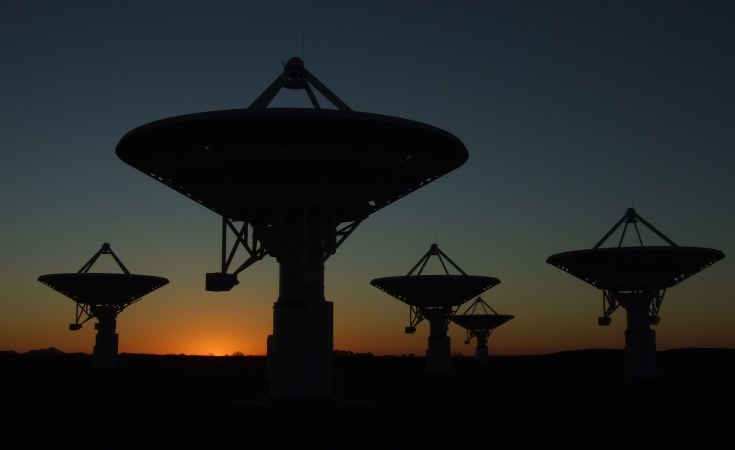Higher Education, Science and Innovation Minister, Blade Nzimande, unveiled on Monday the kick-start of the on-site construction of the Square Kilometre Array Observatory (SKAO) telescopes infrastructure in Carnarvon, Northern Cape.
Radio astronomy, according to Nzimande, has begun to revolutionise our understanding of the universe.
The Higher Education, Science and Innovation Minister described the development of the SKAO as a major innovation that will provide scientists with data to push the explanatory frontiers of modern cosmology.
"I cannot help but be intrigued by the idea that significant discoveries on cosmological origins may well be made on African soil through the work of the SKA - the very place where we know through science the origin of all humanity is found," Nzimande said.
The Minister was speaking at the onsite commencement of the construction ceremony of the world's largest radio astronomy infrastructure and telescopes in South Africa and Australia.
The ceremony marks a significant milestone, with the project being 30 years in the making, including several years of detailed design and engineering work.
"SKA is pioneering, and in some ways unique international scientific project which demonstrates the power of multilateral collaboration in science to help us tackle the big challenges of humanity," he told delegates.
"We owe a great deal to people who have worked incredibly hard to make this day possible, and it would not do justice to mention all."
Nzimande paid homage to the SKAO leadership, governments of all the SKA international partners and the managerial, scientific and technical staff both in South Africa, the United Kingdom, Australia and other parts of the world who are working on this groundbreaking project.
He also mentioned China, which is a crucial partnership with the SKA as the manufacturer of the telescope dishes for the mid-frequency array.
Return on investment
He welcomed the SKA-mid infrastructure contract awarded to a South African company as part of the construction of the mid-frequency components of the SKA telescope in the Karoo.
Power Adenco Joint Venture was named a successful bidder for the tender to build the major civil infrastructure, which includes the rollout of power, fibre and roads - the biggest contract awarded by SKAO to a South African-based company, amounting to close to R890 million.
A total estimated value of contracts worth R1.2 billion has now been awarded to South African entities, with further contracts expected.
In addition, he said, the leasing of buildings to be constructed, and SKAO's ongoing technical maintenance and operations for the next 50 years will deliver long-term, sustainable foreign investment to South Africa with about 11 200 construction job opportunities in the next six years of construction.
Skills development
Meanwhile, he said the South African Radio Astronomy Observatory (SARAO) will continue to invest about R80 million per year through bursary programmes to develop the requisite skills in South Africa and the African partner countries.
He announced that the SARAO would fund about 100 bursary recipients per year and the skills that will be targeted include artisans, technicians, astronomers, engineers and data professionals.
MeerKAT telescope
Over the past five years, Nzimande said, South Africa's investment in the development of astronomy, specifically the MeerKAT radio telescope, has realised socio-economic spin-offs.
This includes the installation of 110 km of overhead power lines, the resurfacing of 80 km of road and the construction of complex foundations for the 64 dishes, which created more than 8 700 direct and indirect jobs for the local communities surrounding the SKA site.
The MeerKAT radio telescope is a precursor to the SKA telescope and will be integrated into the mid-frequency component of SKA's phase one.
The telescope was completed in 2018 for R3.2 billion with 75% local content, which boosted the local industry in terms of manufacturing various components for the telescope.
The Minister said 1 400 grants and scholarships have been awarded in the field of science and engineering.
In addition, about 400 technicians have been trained in trades related to the work being done on the telescope.
More than R130 million was spent on local businesses during the construction phase of the MeerKAT.


